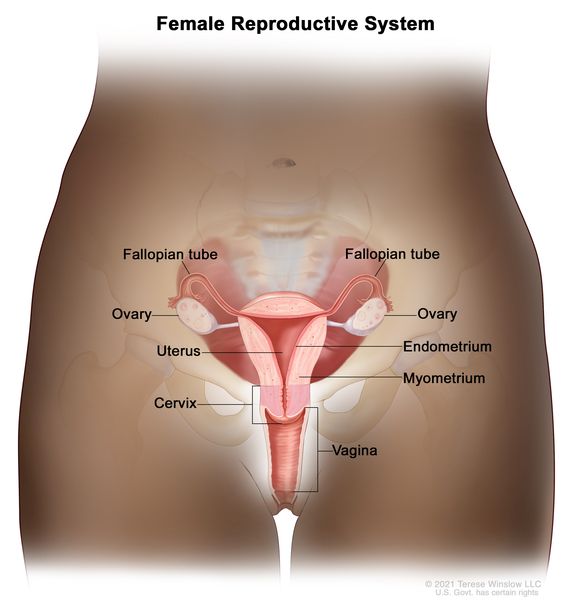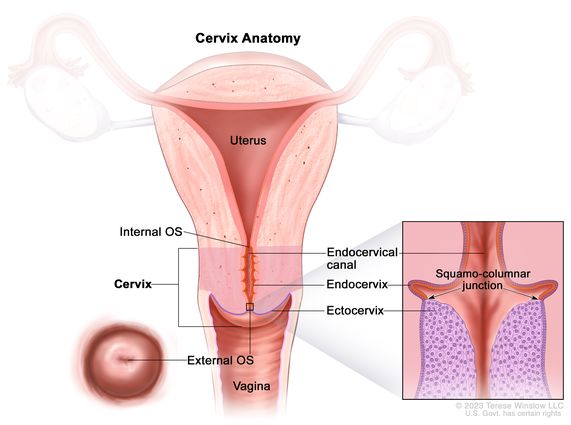cervix
(SER-vix)
The lower, narrow end of the uterus (womb) that connects the uterus to the vagina (birth canal). The cervix allows fluids, such as menstrual blood, to pass from the uterus into the vagina. It also widens during the birth of a baby. The cervix has two main parts, the ectocervix and the endocervix. The ectocervix is the outer part of the cervix that can be seen during a pelvic exam. The endocervix is the inner part of the cervix that forms a canal that connects the vagina to the uterus. The area where the endocervix and ectocervix come together is called the squamocolumnar junction (also called the transformation zone). Most abnormal cell changes and cervical cancers begin in the squamous cells (thin, flat-looking cells under a microscope) of the squamocolumnar junction.

